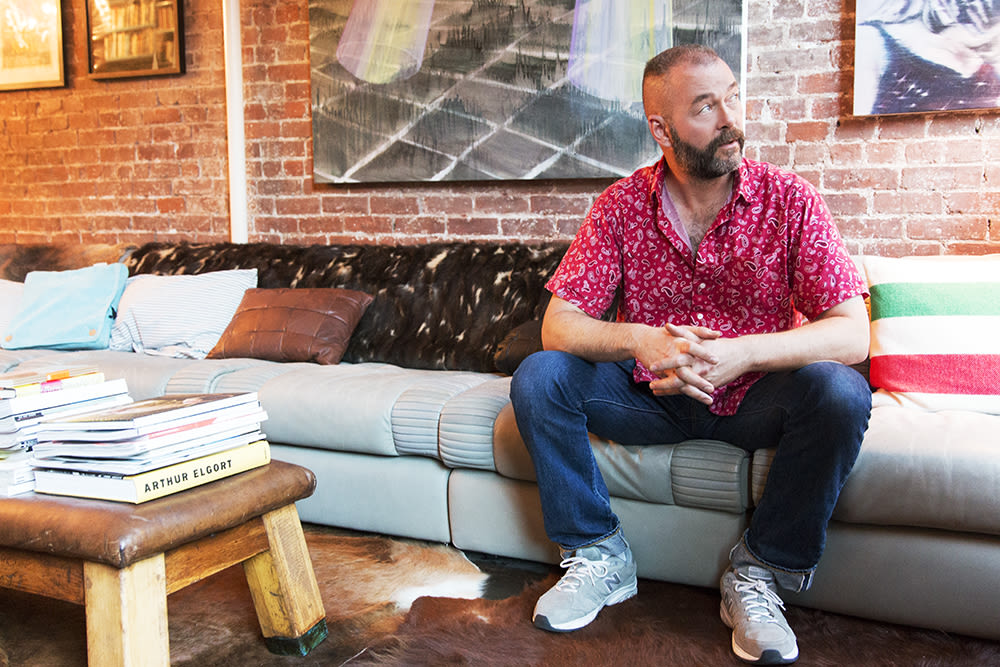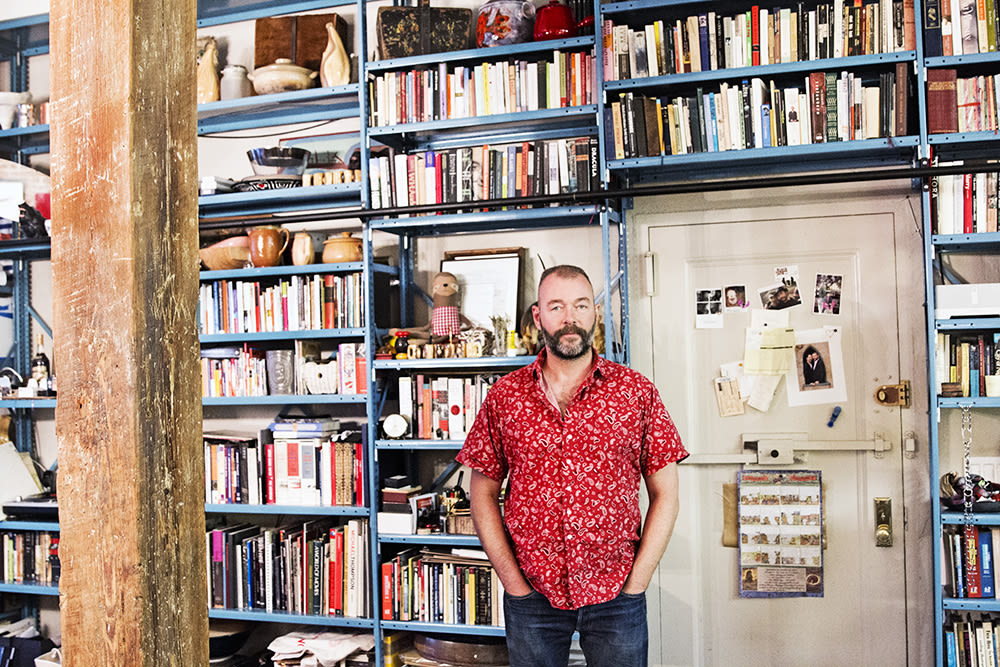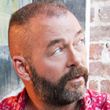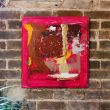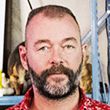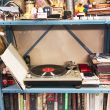'I was born on the South Coast of England, near Portsmouth. We moved around a lot because my dad was in the Navy. We ended up Watford, north of London by '77 and I was doing some makeup by the early '80s. I was in a theatre group in school and we did everything for it—sets, costumes, and makeup were sort of an afterthought. It was that DIY thing, which was very post-punk and New Wave-y. It was all, you know, just very make your own clothes and do your own music, cut your own hair because no one’s got money…
And then I moved to London in ’87, and I started coming to New York to work in the early ‘90s. I moved here—properly moved here—probably in ’94. At that point, a part of me knew [doing makeup] was a proper job because I did start buying English Vogue. Obviously someone was getting paid for it. I would read i-D magazine for as long as possible until getting thrown out of the shop! The magazine was very different than it is now—it had this kind of like rectangular format that was quite blocky, almost Xerox-y looking. A lot of the photos were just someone looking cool on the street, like the punks…and then in crept the pictures of Boy George before he was Boy George and all of those characters. I used to see Maria Cornejo in i-D—then a hundred years later we’re friends and we work together.
And then I started to apply myself to those magazines. You’d have to just call and show up and then no one would see you. I didn’t get any proper big magazine work in England until I started working in America. Every job before then was for places like a magazine in Bristol called Venue, and for the local newspaper. There really weren’t that many magazines back then, even compared to now. We talk about the death of print media. But there’s like more fucking magazines than you can shake a stick at. And there’s magazines I’ve never even heard of! Somehow they seem to have these incredible production values on nothing. There are some big magazines you can do work for—the big ones even—but you know, better bring a sandwich. They're not going to feed you!
I didn’t assist either—I didn’t know that was an option. Because I also hadn’t had any formal training. I went to a beauty-aesthetic program but it was really, really archaic and old-fashioned…matching blue eyeshadow for blue eyes and this kind of stuff. It was really, really antique, and I thought, I’d just do better myself. And I did.
Eventually I started working more with The Face and i-D. I did the story with Kate [Moss] and Corinne [Day] and Lorraine Pascale. When I started working with Kate, she still lived at home in Croydon, and I lived in Brixton at the time. Her bus ride was a bit longer than mine, but I would always take the bus and get off in Brixton and meet her. This is going to sound schmaltzy and romantic—but so much of what we were doing was very homemade at the time, you know…How many people have a car? Who’s got a fashion clown car? Can we pile in it? How far can you go with it? What can you do? On no money. It’s not like that anymore. Juergen Teller probably held onto that way of doing things for as long as anybody. He still works in that way, even in big commercial projects where there’s going to be more of a crew. It’s tight and very personal, very individual. It hasn’t become this great movie set production.
My first fashion show was Calvin Klein. It was like the no-makeup makeup thing. That’s like a blessing or a curse, depending on how you look at it. What I do is temporary. I’m not tied to it—or any style really, even though I might be known for a certain kind of thing. It washes off. And the photographic proof is generally not mine. I’m not talking myself out of a job because I think that’s the beauty of it. The freedom of it is that it doesn’t last. Even if you do exactly the same makeup every day for your entire life, it’s always different because it’s always new every time you put it on. It’s like Groundhog Day.
Once I started doing shows in New York, then people started asking for shows in Europe. But the shows then were not at all like the shows now. It was not a zoo. Obviously there were no such things as bloggers. And there were a handful of photographers. The only mainstream reporter was for CNN—plus Tim Blanks was probably doing something. Once or twice I got interviewed. In a way, I think it’s a terrible shame that backstage has become so important. There isn’t any mystery left to a show. I sound like a grandpa, but I like the idea of waiting for a magazine to see what happened at the shows. My sister is a nurse and she sees my work before I do. I’m backstage, and I’m still working on the girls, and then I’m on my way back from the show and she’ll text me and say, ‘Oh, Michael Kors looked lovely!’ And I’m like, ‘Good. Haven’t seen it…’
Anyone who does shows just knows there’s a raft of the cliché questions or directions you’ll get, and a big part of the training is how not to be a bastard about it. But if I had a penny for every time I heard ‘You know—like she did it herself...’ There’s some weird psychology here, but there’s a certain effect that people assume that the less that’s been done to the girl—in spite of her being this genetic anomaly in the first place because she’s six-feet tall and the perfect size—makes it somehow more authentic. Or, you know, they invoke Kate Moss, which is pointless. Invoking Kate is like saying Beetlejuice. It doesn’t mean anything, because it’s Kate. And you’re either Kate or you’re not. Every few years we hear, ‘Oh, she’s the new Kate Moss.’ Which probably happens in all media…’It’s the new X musician, the new Johnny Depp or whatever.’ Who cares. It’s the same with trends—they’re just mathematics and I won’t have anything to do with them. You have to rely on fashion’s goldfish memory that people don’t remember that we’ve done it 20, 30, 40 times before.
My work isn’t really about big gestures. Occasionally I’ll do something that’s a solid, identifiable stamp of something. Céline was like that with the blue eye. And that came from Phoebe—she liked the blue eye. She liked the red lip. And sometimes she liked them both. But the interesting thing is that we did that makeup on less than a quarter of the girls at the show. Most of them had no makeup on. So it just popped up. And that feeds into what I said before—makeup is ephemeral. It is transparent, it is temporary. That’s how I feel about my work—it’s just a temporary condition. And I don’t think it’s possible to have a complete vision in such a temporary medium. Makeup doesn’t exist until someone’s face. You fuck it up but it washes off. Everyone has 10 minutes to wait, so I take it off and start again.
As a makeup artist, you should be able to do everything. You may not have to do everything, but you should be able to. You will never have to create the Peggy Moffitt eye with four pairs of false eyelashes, but you should be able to—because it’s what we do. You have that reserve of information and knowledge and hopefully frames of reference and understanding of at least some aspects of beauty and makeup history. Get a membership to the Met or the New Museum. Or the Whitney. You should be seeing everything. Films, sculpture, and great art. Have range and also keep moving. Never have an idle hand. Draw. If you’re not doing makeup, you should be drawing. You should be writing. A hand should always be mobile, should always be fluid. I just did it until I figured it out. Until I got it right.”
—as told to ITG
Dick Page photographed by Tom Newton in New York City.
Remember Dick Page's look for the Victoria's Secret Fashion Show last year? Check out that video here. Or, read more of The Professional (including career advice from Tom Pecheux).
